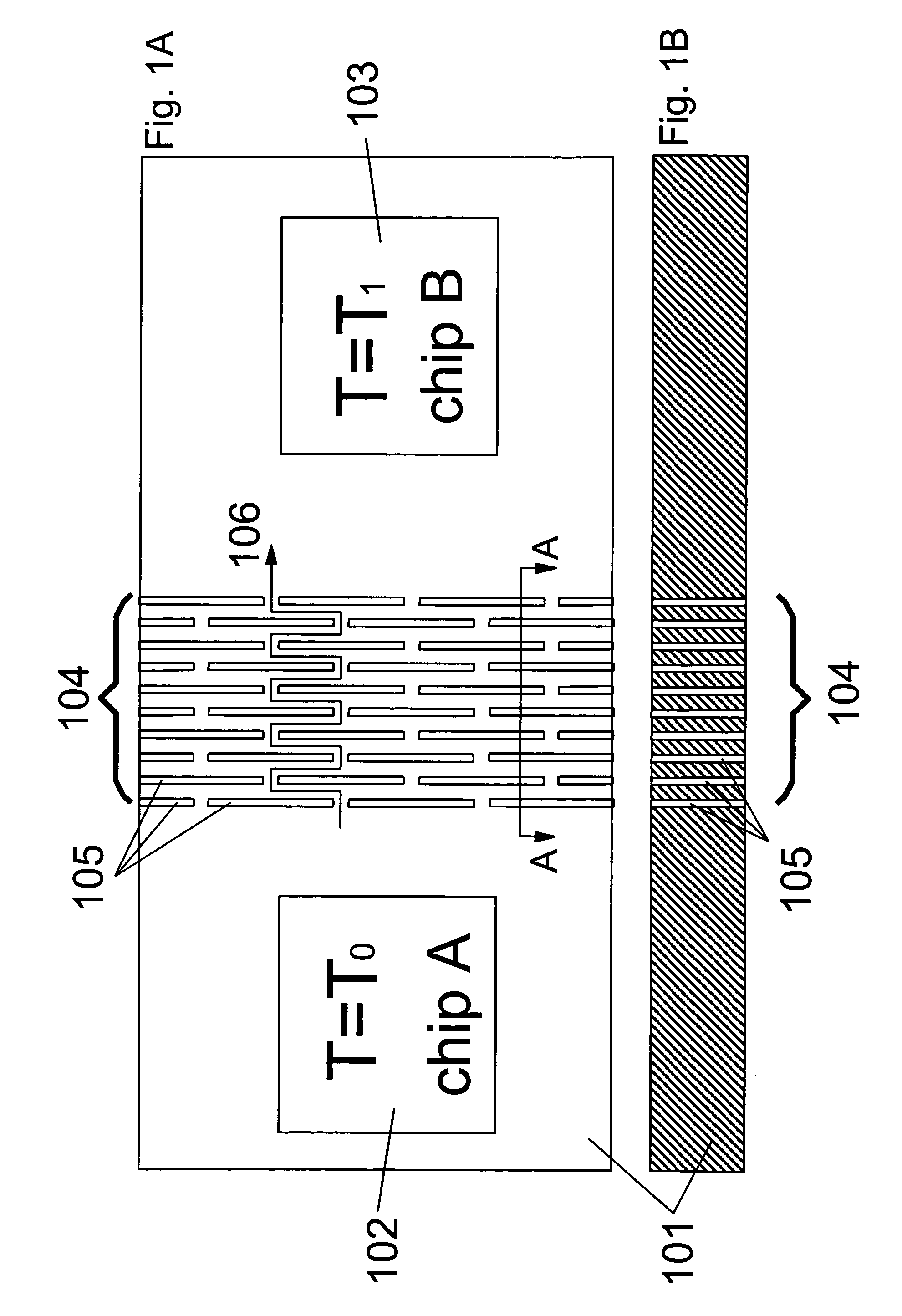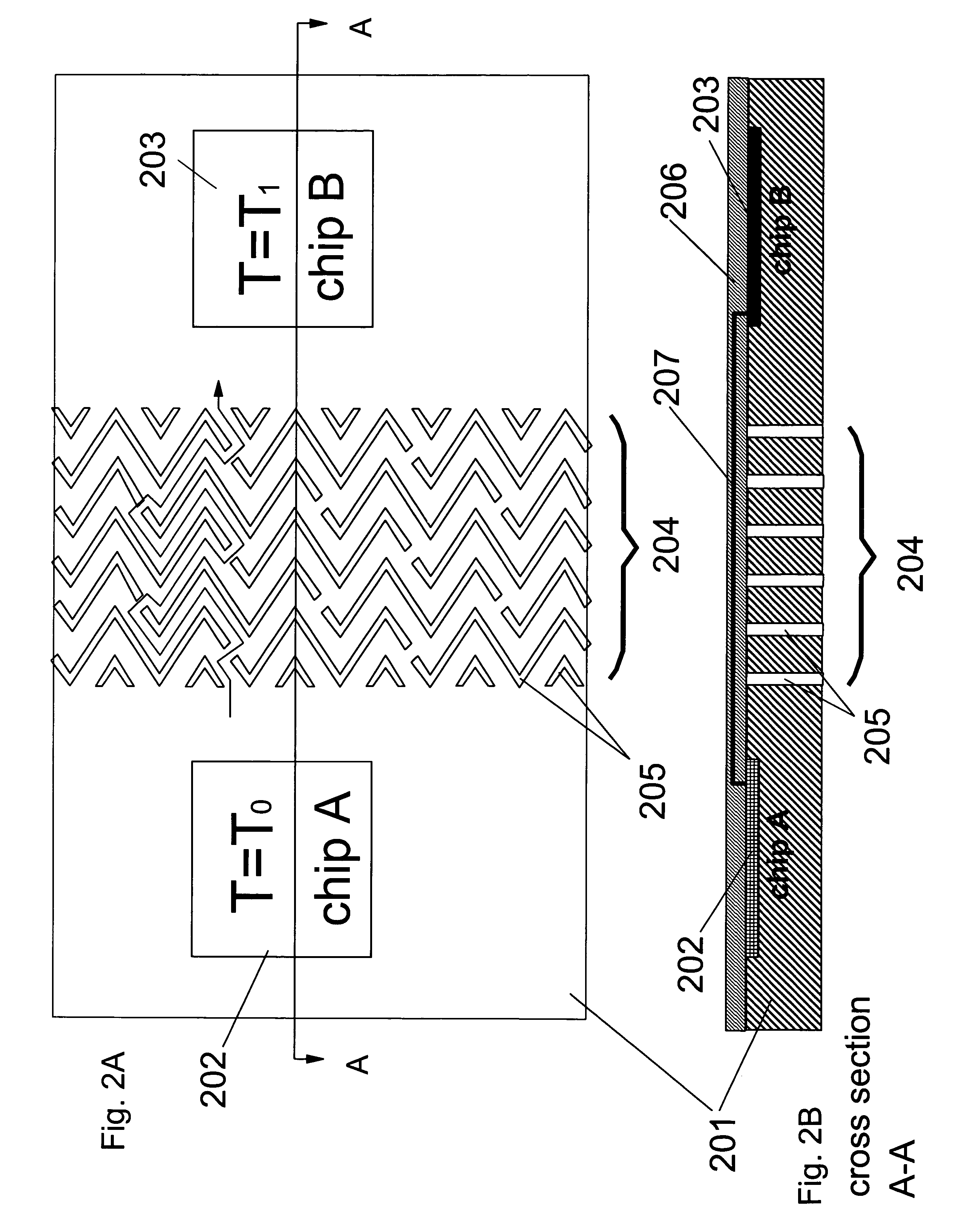Apparatus and method for thermal isolation, circuit cooling and electromagnetic shielding of a wafer
a technology of electromagnetic shielding and circuit cooling, applied in electrical apparatus, semiconductor devices, semiconductor/solid-state device details, etc., can solve the problems of inability to close the integration of laser drivers and laser diodes on the same silicon substrate, complicated system integration and packaging, and limited substrate choice for laser diodes to be mounted, etc., to achieve the effect of preventing noise (thermal or electromagnetic) transmission
- Summary
- Abstract
- Description
- Claims
- Application Information
AI Technical Summary
Benefits of technology
Problems solved by technology
Method used
Image
Examples
Embodiment Construction
[0022]FIGS. 1A and 1B show a silicon substrate 101 including chip A occupying region 102, chip B occupying region 103 and a thermal barrier 104 separating the two regions. The term “chip” as used herein, generally refers to a semiconductor wafer mounted on the substrate 101 or alternatively to a circuit fabricated in the silicon substrate 101. The thermal barrier includes through vias 105 devised to form a maze-type structure. The maze of through-vias 105 lengthen the thermal path between chip A 102 and chip B 103 as illustrated by arrow 106. In the exemplary embodiment of FIG. 1, thermal impedance is increased since vias 105 are poor thermal conductors and since conduction primarily occurs in the solid portion of maze 104 as indicated by the arrow 106. FIG. 1B shows a cross sectional view of substrate 101 having through vias 105 formed thereon. Thus, in accordance with one embodiment of the disclosure, thermal isolation may be enhanced by lengthening the conductive thermal path.
[00...
PUM
 Login to View More
Login to View More Abstract
Description
Claims
Application Information
 Login to View More
Login to View More - R&D
- Intellectual Property
- Life Sciences
- Materials
- Tech Scout
- Unparalleled Data Quality
- Higher Quality Content
- 60% Fewer Hallucinations
Browse by: Latest US Patents, China's latest patents, Technical Efficacy Thesaurus, Application Domain, Technology Topic, Popular Technical Reports.
© 2025 PatSnap. All rights reserved.Legal|Privacy policy|Modern Slavery Act Transparency Statement|Sitemap|About US| Contact US: help@patsnap.com



